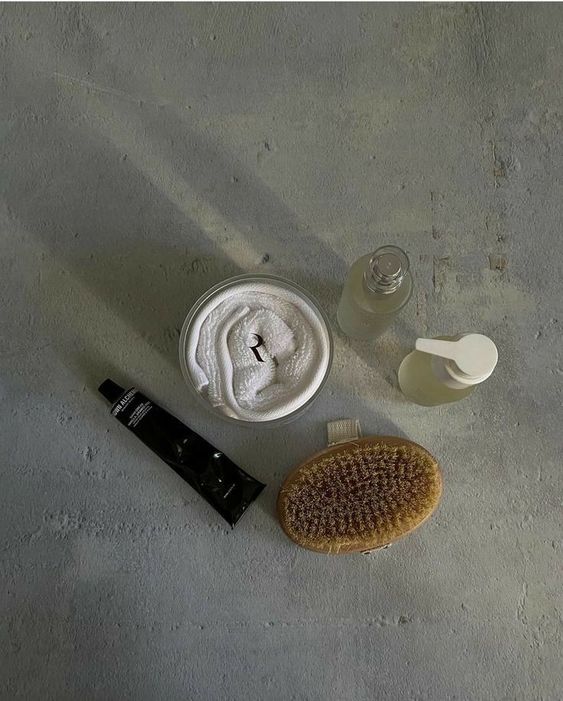 Source: Pinterest
Source: Pinterest
These two ingredients may have similar benefits for your skin, and almost identical names, but the way they’re sourced could make a big difference, depending on your ethos.
If you actually take the time to read the ingredients on your skincare products, in addition to having a 10/10 eyesight, then you may have come across the ingredient ‘squalane’ or ‘squalene’. Two very similar words, but the “in” in one of them can change things big time!
Traditionally, squalene is commonly extracted from the liver of deep-sea sharks. In other words, sharks are hunted for this precious substance because they are considered its richest source[1], which puts some species of deep-sea sharks in danger of extinction.
Sadly, this is still happening today, mainly due to shark liver squalene being much cheaper (approximately 30%) than obtaining squalene from plant sources such as olives or sugar-cane.
Believe it or not, 90% of the squalene used in the cosmetic industry is still derived from shark liver oil[2]. This translates into almost 3 million deep-sea sharks being killed every year to satisfy the needs of the market[2]. For this reason, companies have been working non-stop on ethical and more affordable squalane alternatives like those obtained from sugar[2].
Squalene and Squalane: What Is The Difference?
Squalene Definition and Application in Today's World
Squalene is one of the main components of sebum, secreted by the sebaceous glands, and makes up about 13% of your skin surface oils[1]. It is essential for your skin health, but often harvested in unethical ways. It also comes in two forms: squalene and squalane, both of which are effective; however, the later has a longer shelf life.
Squalene is a naturally occurring lipid, which is often present in plants, animals, and in human sebum. Its name comes from Squalus spp., which is the shark species it was first derived from[1]. It is derived from the liver of sharks and is commonly used as an ingredient in the beauty industry. Recently, beauty brands are sourcing it from plants such as amaranth, olives, palm, rice, sugar-cane and wheat germ[1]. In its natural form, it is highly unstable and quick to oxidize due to its molecular makeup.
Squalane Definition and Application in Today's World
Squalane, on the other hand, is created by the hydrogenation of squalene: hydrogen atoms are added to this liquid fat in order to convert it into a semi-solid or solid fat (from unsaturated to saturated) . Through this process, its instability is removed to create a more stable molecular structure. This protects the lipid against oxidation, so it doesn’t turn rancid. Squalane is much lighter and, therefore, a better option for anyone with oily or acne-prone skin. It also has a longer shelf life than squalene, which is why it’s better for your beauty products.
Alarming fact: Did you know that 70% of shark species are at risk of extinction?
Benefits of Squalane: The Legendary Checklist
- Anticancer: squalane has been shown to inhibit the activity of chemicals that promote tumor formation[1].
- Anti-inflammatory: it has been used with great success to improve inflammatory conditions such as acne, atopic dermatitis, seborrheic dermatitis, psoriasis, and many others[3].
- Antioxidant: protects the skin against the damaging effects of free radicals produced by UV radiation and other environmental aggressors[1].
- Emollient: an ultra softening and lubricating agent that sinks in quickly while restoring the elasticity and suppleness of the skin[1]. No wonder why it visibly reduces aging signs and promotes a younger-looking appearance.
- Enhances the delivery of lipid-based nutrients: this means that actives will more easily and effectively reach the areas where they are needed the most[1].
- Moisturizer: replenishes the water levels of the skin, hence supports its skin barrier function and prevents transepidermal water loss. The beauty of this active ingredient is that it can achieve these benefits without leaving a greasy after-feel or clogging the skin[1].
Do My Skincare Products Contain Vegan Squalane?
You may have heard a rumor that ‘Squalene’ comes from sharks, and ‘Squalane’ comes from olives. That’s not quite true! Both squalene and squalane can come from shark's liver. Until governments ensure squalane-based products are accurately labeled, it’s up to us to thoroughly research the products we buy.
When reading an ingredient label, it’s actually difficult to tell where exactly the squalane comes from, as it’s currently not a requirement to highlight this on an ingredient list.
The beauty industry is still highly unregulated, and brands have no legal obligation to let us know how they source their squalane. Unfortunately, the US and EU base their prohibitions on toxicity studies rather than ethical practices and sourcing concerns, while South Korea is the only country that has codes for squalane[4].
So we advise you to keep an eye on the brand’s ethos and ask where their squalane or squalene comes from. As long as you are asking all the right questions, you are on the right track!
“Consumers deserve the full information to make educated decisions about what they put into – or onto – their bodies. Many people are completely unaware that the cosmetics industry is a major source of fishing pressure on deep-sea sharks. Yet, given the choice, who would opt for cosmetics made from vulnerable sharks, especially when plant-based alternatives are available?”
OCEANA’S SHARK EXPERT, DR. ALLISON PERRY
At ROSAFA, we found a way to produce squalane as safely and effectively as the human body does. ROSAFA’s squalane comes from olives to create a beautiful end result: highly stable, totally sustainable, eco-friendly, and cruelty-free squalane.
To learn more about our brand and products, make sure to tune into our social media platforms on Instagram, Facebook, Linkedin, and Pinterest.
Reference
[1] https://www.ncbi.nlm.nih.gov/pmc/articles/PMC6253993/
[3] https://pubmed.ncbi.nlm.nih.gov/23449131/
[4] http://www.bloomassociation.org/en/wp-content/uploads/2018/04/squalane-bloom-english-1.pdf




